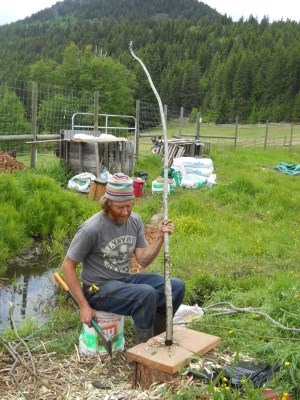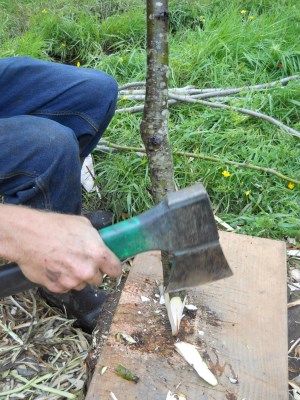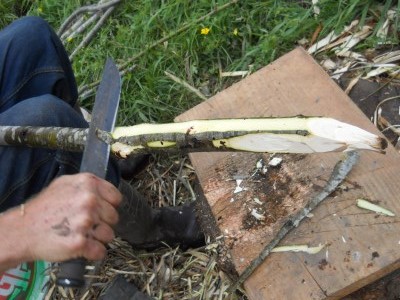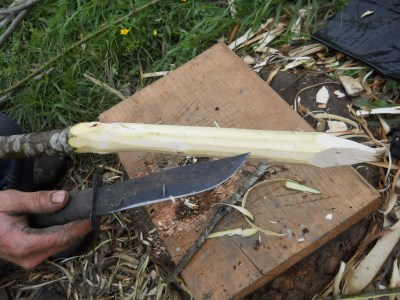To prepare the live cuttings a “spike” must be created at the basal end. This peeled and pointed end should be about 20 to 25 cm in length. The “spike” is important for holding the cuttings upright both in the planting beds, and in a sturdy position after out-planting in the field (resistant to wind, waves and wildlife disturbance). Note that on riparian sites I often planted TRS Cuttings at a near horizontal angle, to overhang the stream – the spike made this possible.
Because spike portion of the cutting is peeled, root growth here is prevented (ensuring root growth is focused with the planting bags), and this probably also allows the cutting to absorb / wick more water from the soil as well.
Here I am holding a 3 m long Sitka willow cutting. Place the base on a good chopping block. Note the diameter of material to use.
Using a light ax or hatchet to sharpen the end of the cutting (small Fiskars axes are great).
Then using the axe, or a good knife, peel the bark off about a foot or so of the cutting. For shorter cuttings the spike portion does not have to be as long.
Here I am using a knife – the Fiskars axe actually worked best, but keep a keen edge on it.
Completed spike. Be sure to peel all the green cambium away.




